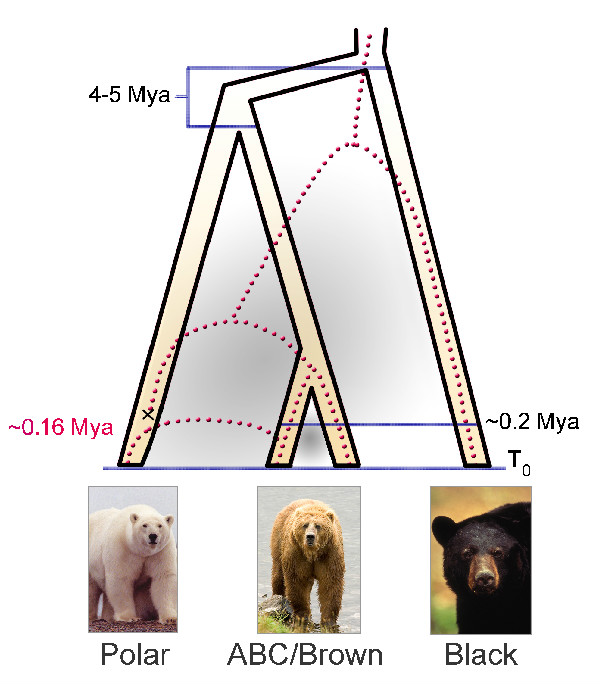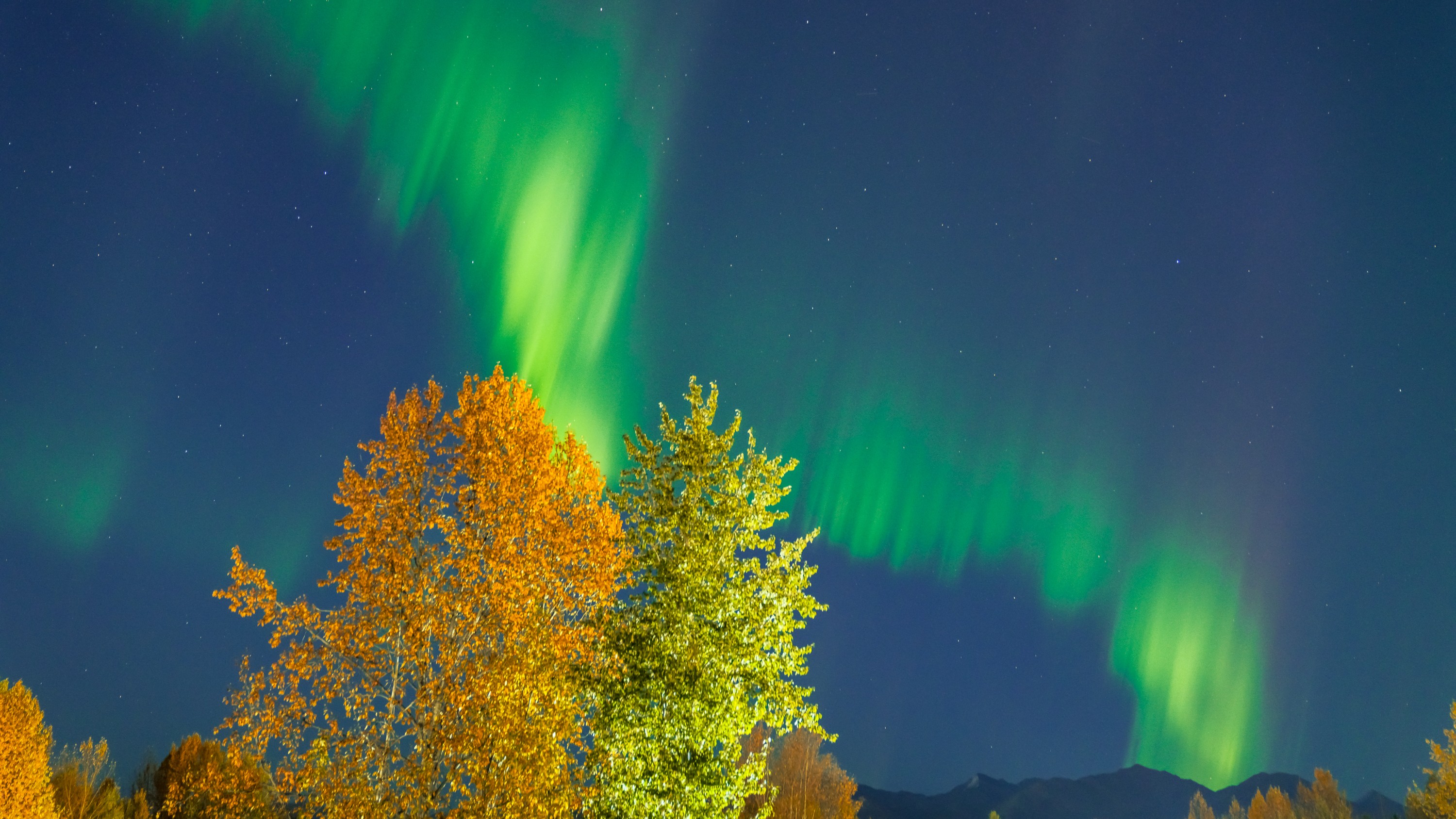Ancient Warming May Have Reunited Polar and Brown Bears, for a Bit

Polar bears' past may echo their future, indicates a genetic study that finds the white-furred, sea ice-dwelling bears interbred with brown bears long after the two species separated as much as 5 million years ago.
Climate change likely drove this mixing among bears, writes the research team, noting there is evidence this is happening again.
"Maybe we're seeing a hint that in really warm times, polar bears changed their lifestyle and came into contact, and indeed interbred, with brown bears," said study researcher Stephan Schuster, a professor of biochemistry and molecular biology at Pennsylvania State University, and a research scientist at Nanyang Technological University in Singapore, in a statement.
Schuster, Webb Miller from Penn State, and Charlotte Lindqvist from the University of Buffalo, lead the research team.
The study estimates polar bears split from brown bears between 4 million and 5 million years ago, after which they endured fluctuations in climate, including ice ages and warmer times.
Polar bears are currently facing the effects of climate change, this time caused by humans, as the Arctic sea ice upon which they live recedes to unprecedented levels.
"If this trend continues, it is possible that future [polar bears] throughout most of their range may be forced to spend increasingly more time on land, perhaps even during the breeding season, and therefore come into contact with brown bears more frequently," the researchers write in results published today (July 23) in the journal Proceedings of the National Academy of Sciences.
Get the world’s most fascinating discoveries delivered straight to your inbox.
"Recently, wild hybrids and even second-generation offspring have been documented in the Northern Beaufort Sea of Arctic Canada where the ranges of brown bears and [polar bears] appear to overlap, perhaps as a recent response to climatic changes," they write. [Album: 8 Bizarre Hybrid Animals]
Schuster and colleagues sequenced genomes (the complete genetic blueprint) of three brown bears and a black bear and compared them with the genomes of polar bears, one modern and the other obtained from remains from a 120,000-year-old polar bear.
Based on differences they found in the bears' genetic codes, the team estimated polar and brown bears split apart about the same time black bears became a distinct species After the split between polar and brown bears, the two species remained isolated for some time, allowing genetic changes to accumulate, before interbreeding more recently, their analysis indicates.
This complicated history may explain why other research has estimated a much younger age for polar bears, the researchers write.
A study published earlier this year estimated polar bears evolved 600,000 years ago, contradicting a previous estimate of 150,000 years ago.
Editor's Note: This story was updated on Tuesday, July 24 at 12:57 ET to identify the lead researchers on this project.
Follow LiveScience writer Wynne Parry on Twitter @Wynne_Parry or LiveScience @livescience. We're also on Facebook & Google+.


